'Black filth' found at Camp Gully Creek
Wild magazine editor James McCormack shares a first-person account A statement from Peabody, owners of the Metropolitan Mine at Helensburgh On 26 September 2022, shortly after the Flame's print edition went to press, a Peabody spokesperson shared...
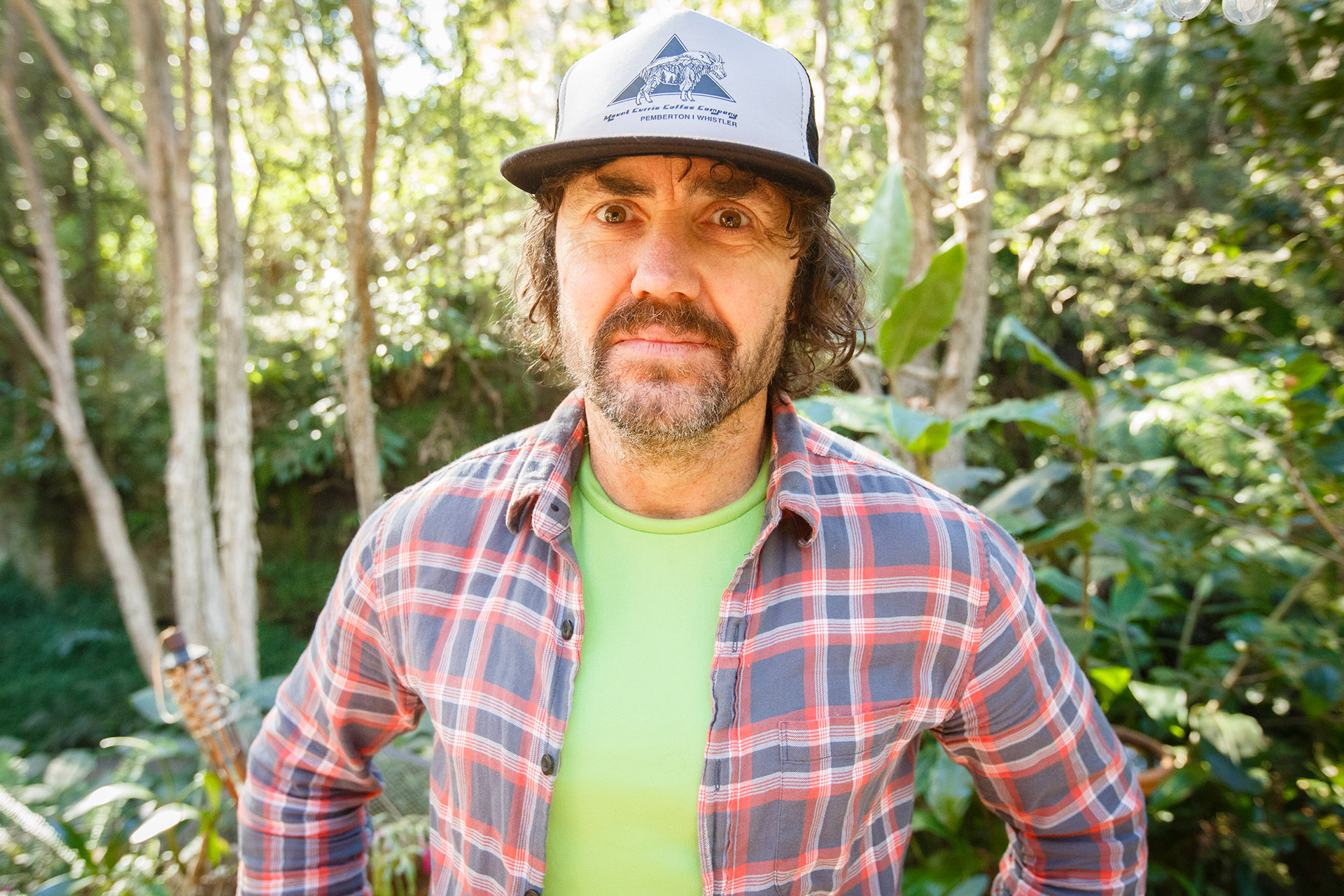
Helensburgh resident James McCormack, the editor of Wild Magazine, shares a first-hand account of the pollution he discovered in Camp Gully Creek
As a 2508 local, one of my favourite things to do is exploring the southern inland reaches of the Royal National Park and its neighbour, the Garrawarra State Conservation Area. It’s an amazing area, full of gorgeous rainforest, and laced with beautiful creeks studded with mossy boulders and sparkling cascades. In early September, however, not far off darkness, on my way home to Otford from Helensburgh via Garrawarra and the Nasho (as 2508-ers affectionately know the Royal NP) I reached Camp Gully Creek, right near its confluence with the Hacking River. Something didn’t look right. The water looked … wrong.
And then I did a double-take. What I saw before me looked almost surreal – inky, black water flowing through what is usually a lovely section of the creek, where it flows over a small cascade. And on the creek banks, black filth had collected, smeared over rocks and coating small, dried-up pools.
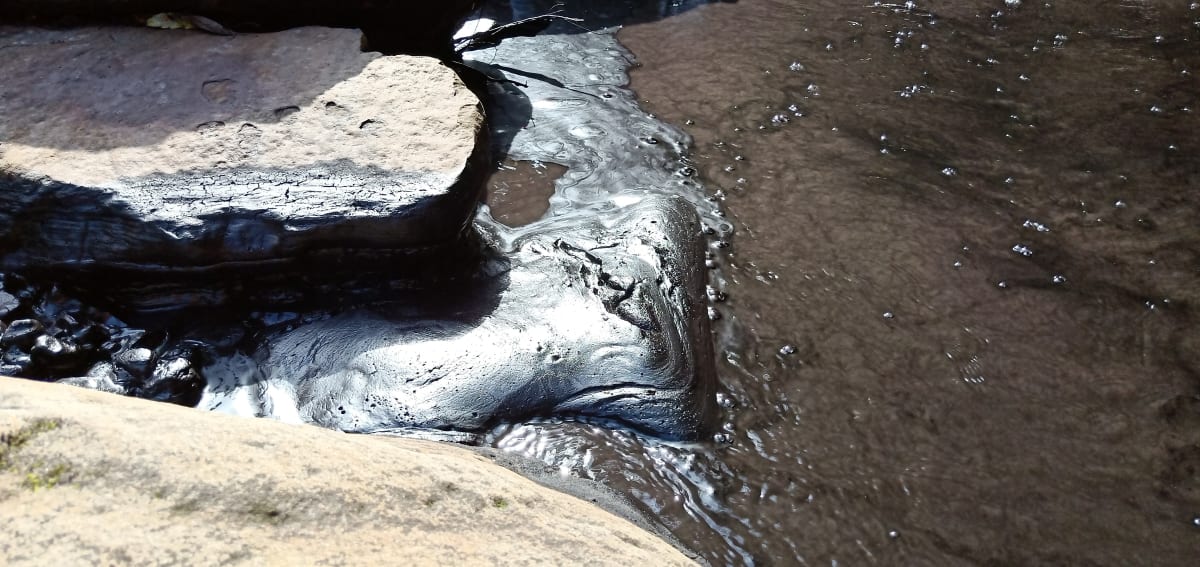
I knew immediately there was only one place this filthy water could be coming from. A little over one kilometre upstream lies the Metropolitan Mine, Australia’s oldest working coal mine. There’s some irony that it abuts Australia’s oldest national park; the two have existed as uneasy neighbours for well over a century.
But there was another irony, too, one that would help me get this pollution event brought to attention. I also happen to be the editor of Wild, a magazine that focuses heavily on conservation, and using our social media platform, I was able to raise the alarm. Because here’s the thing: when I contacted the NSW Environment Protection Authority (EPA) about the event, they knew nothing of it. In fact, to be frank, they didn’t seem overly interested. But there was a reason for this. The mine, despite being obligated to by law, had not notified the EPA of it, so the organisation thought I was talking about an earlier event that they actually knew about, one that occurred the month before. Sadly even that pollution event was not the first of the year; there’d been one back in January. And who knows – there may have been more during the year; the water coming out of the mine is not monitored frequently enough to be aware of all events. In any case, there have certainly been many other pollution events in the years prior.
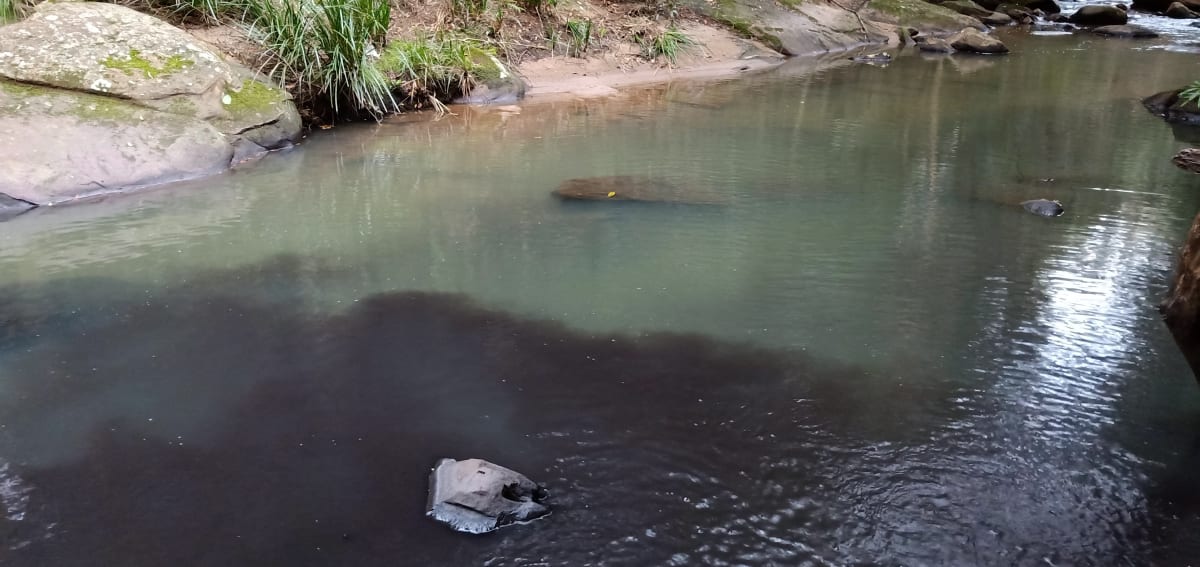
Being late in the day when I made the initial discovery, there was no time to investigate further. But the following day, I punched upstream a little further, and what I saw horrified me. It was even worse than downstream. The water was blacker, full of even more coal sediment. Greasy slicks were apparent on the water. And not only were the creek banks coated in muck, in sections a thick, black, custard-like substance floated on the water, sometimes collecting in deposits 15 centimetres high. All this was flowing down Camp Gully Creek and then into the Hacking, which is the lifeblood waterway of the Royal NP’s interior. I could only guess the horrendous impact this would be having on the watershed’s ecology.
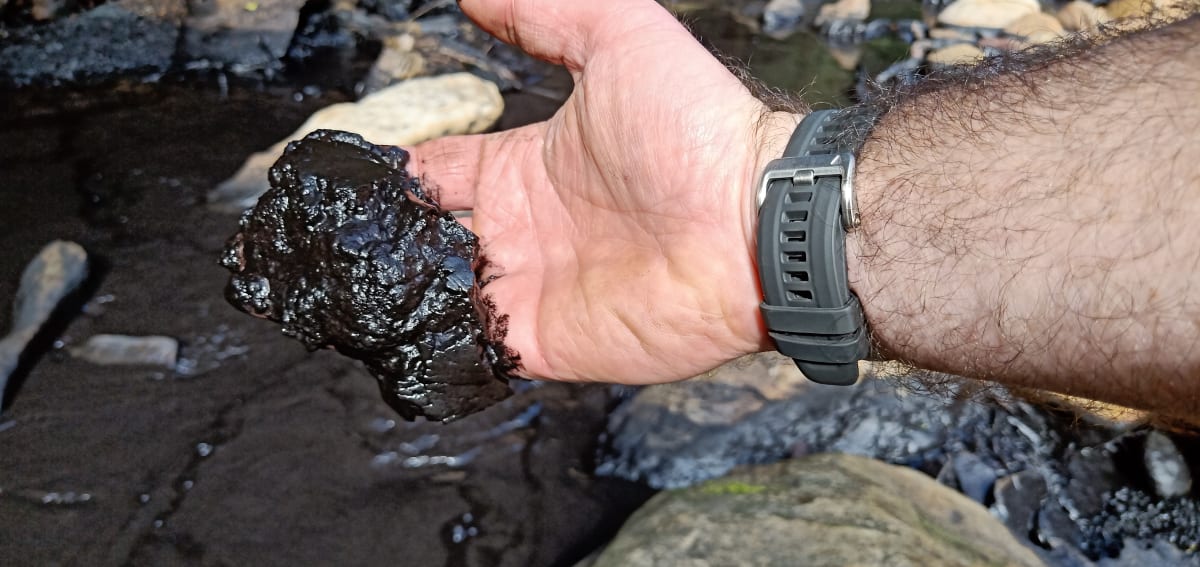
I took photos of all this, and I was able to leverage them on the magazine’s social media pages. It’s important I note this, because not everyone is given this same opportunity. The Sutherland Shire Environment Centre has been trying for years, unfortunately with only occasional success, to gain interest in a string of pollution events from the mine. I also know of private individuals who have made reports of pollution incidents, only to have them effectively ignored. Luckily, however, I had the magazine’s platform, and eventually I got not only the EPA’s attention, but also that of Nick McLaren of ABC Illawarra, and then Senator Sue Higginson. Thanks to their involvement, subsequently the SMH, the Guardian and the Daily Mail all ran stories on the toxic black sludge.
Meanwhile, the EPA kicked into gear. At first, they hadn’t known what to make of my claims. But, with the imagery, it became hard to ignore. Two days after first reporting the event, I had a good conversation the Illawarra EPA, and convinced them of the seriousness nature of it. They sent officers that day to investigate. The following day, a Friday, they sent a prevention notice to the mine. By the time I went back to Camp Gully Creek on the Saturday, the flow of filthy water from the mine had stopped. At last.
But with the mine’s waste having flowed for many days, much damage had already been done. And with story now widely in the news, NSW Minister for Environment and Heritage James Griffin stepped in to show just how serious the event was by travelling to the Royal NP to view the damage. When I met him there – with TV film crews in tow ready to broadcast his visit in the news bulletins that night – he was outraged. But this did not seem like displeasure only expressed in front of the cameras, nor the confected anger we often associate with politicians; he seemed genuinely angry. If the mine was to be the neighbour of Australia’s oldest national park, he said, it had better be a good neighbour. It seems a fitting sentiment.
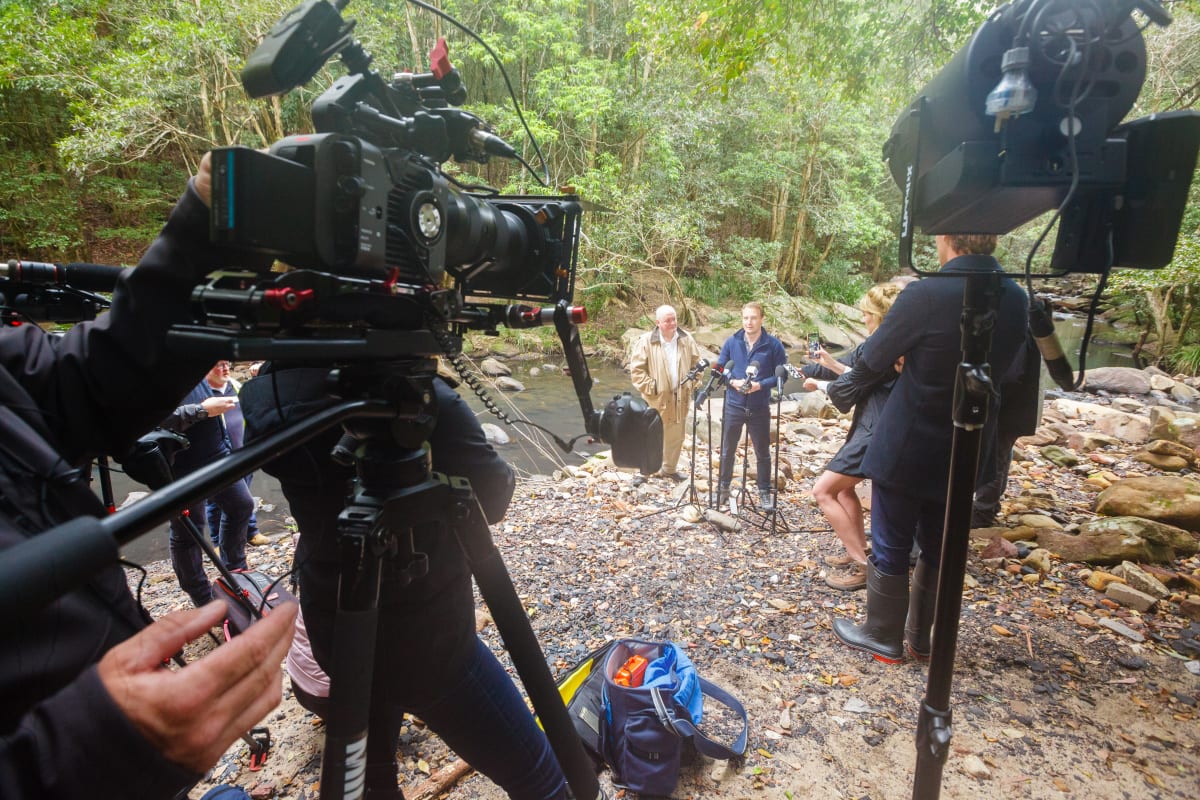
For its part, the mine tried to explain away the situation by saying there had been heavy rain. While this may have been true for some events earlier in the year, for this September event, the claim was a furphy. Any resident of 2508 knows how dry it was in the lead up to the event. In fact, over the 40+ days prior to the pollution event, at the closest BOM weather station to the mine, approximately eight kilometres distant at Darkes Forest, just 74mm had fallen. For 40 days, this is not much. And August was a particularly dry month, with just 21mm falling, less than a quarter of the average August rainfall. That's right, less than a quarter!
Now, as we well know, despite the involvement of the EPA and Minister James Griffin, this no guarantee at all that things will improve. Peabody, the Metropolitan Mine’s owner, was fined $15,000 in June for a January pollution event. It was a manifestly inadequate amount, as demonstrated by the fact they went onto allow subsequent pollution events in August and then again with this most recent event in September. But still, with all the focus on Metropolitan, and all the scrutiny by both the media and, hopefully, by James Griffin, it’s hard to believe it won’t harder for Peabody to brush similar events under the carpet, as they have in the past.
With all of this, there are several outcomes that we as 2508-ers should not just hope for, but demand for our beloved neighbours, the Royal National Park and the Garrawarra State Conservation Area, both of which deserve far better than this.
Firstly, that no similar pollution events occur. This recent event was not a one-off, and a line needs to be drawn in the sand.
Secondly, as part of drawing that line in the sand, there needs to be a robust fine levied on the company. $15,000 to a multinational like Peabody is like 15 cents to you or me; it’s meaningless. The punishment needs to match the crime.
Thirdly, the creek must be remediated. I am no expert in such things, but it looks to me that such a process, given the extent of the pollution, while be difficult and labour-intensive. Nonetheless, it must be done.
And lastly, constant monitoring needs be done of the waterway. Metropolitan has shown it cannot be trusted to self-report. Had I not come through last Tuesday week, the EPA likely would have had no idea of the event. And moreover, had I not had the influence of Wild Mag to push the agenda, there was every chance this event would have been swept under the carpet. Credit here also belongs to Nick McLaren of the ABC; Wild is a niche publication, and it was Nick’s doggedness that took the story into the mainstream to the extent it could no longer be ignored. Likewise, the Sutherland Shire Environment Centre deserves much credit too for its longstanding work.
I have written this as a 2508-er, but it also needs to be acknowledged that the Garrawarra SCA and, in particular, the Royal NP, are not our playgrounds alone. As Australia’s oldest national park, and the world’s second oldest national, the Royal is of both national and international significance. Let’s give it, and the Garrawarra SCA, the respect they deserve.





